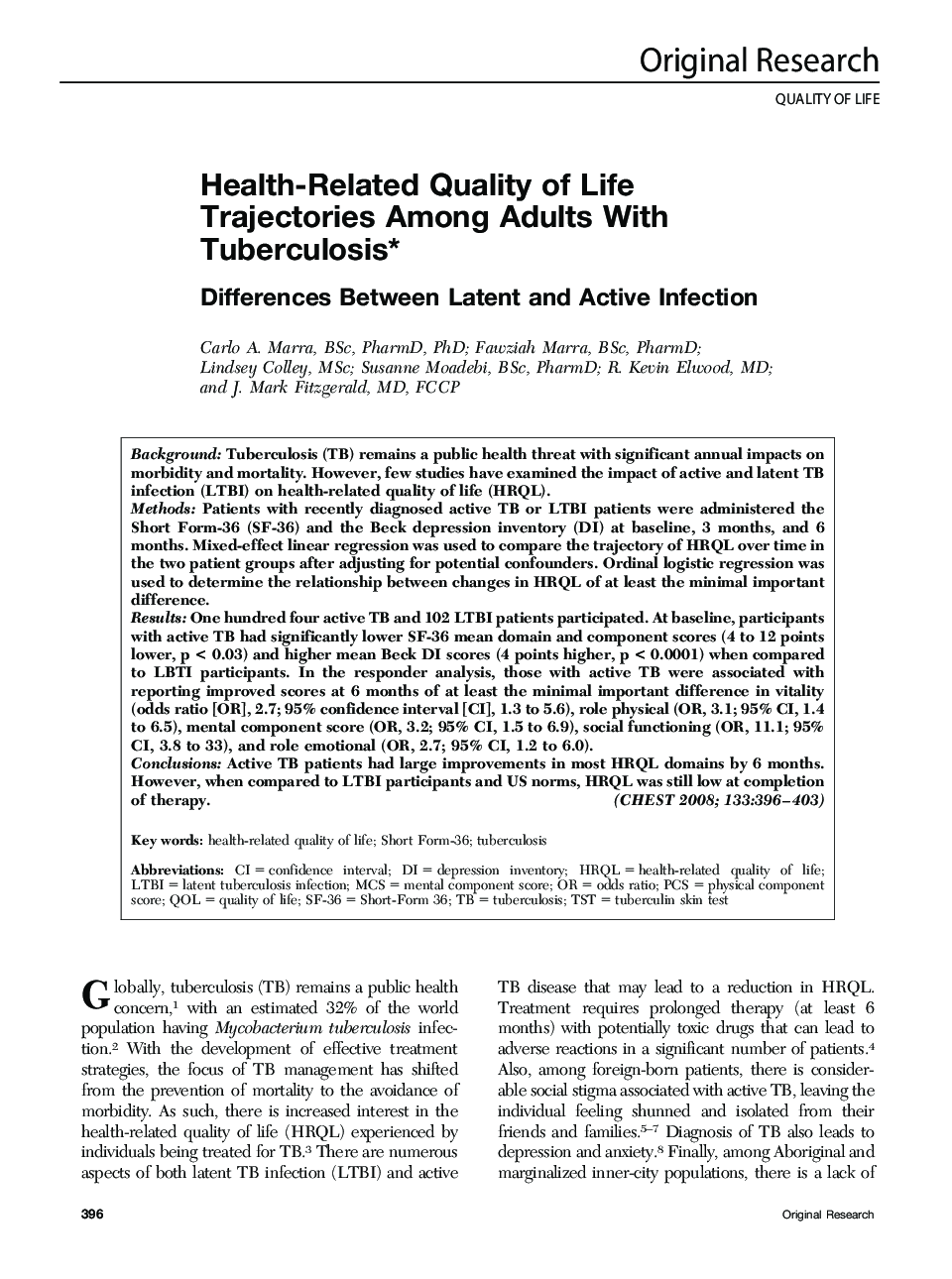| Article ID | Journal | Published Year | Pages | File Type |
|---|---|---|---|---|
| 2904205 | Chest | 2008 | 8 Pages |
BackgroundTuberculosis (TB) remains a public health threat with significant annual impacts on morbidity and mortality. However, few studies have examined the impact of active and latent TB infection (LTBI) on health-related quality of life (HRQL).MethodsPatients with recently diagnosed active TB or LTBI patients were administered the Short Form-36 (SF-36) and the Beck depression inventory (DI) at baseline, 3 months, and 6 months. Mixed-effect linear regression was used to compare the trajectory of HRQL over time in the two patient groups after adjusting for potential confounders. Ordinal logistic regression was used to determine the relationship between changes in HRQL of at least the minimal important difference.ResultsOne hundred four active TB and 102 LTBI patients participated. At baseline, participants with active TB had significantly lower SF-36 mean domain and component scores (4 to 12 points lower, p < 0.03) and higher mean Beck DI scores (4 points higher, p < 0.0001) when compared to LBTI participants. In the responder analysis, those with active TB were associated with reporting improved scores at 6 months of at least the minimal important difference in vitality (odds ratio [OR], 2.7; 95% confidence interval [CI], 1.3 to 5.6), role physical (OR, 3.1; 95% CI, 1.4 to 6.5), mental component score (OR, 3.2; 95% CI, 1.5 to 6.9), social functioning (OR, 11.1; 95% CI, 3.8 to 33), and role emotional (OR, 2.7; 95% CI, 1.2 to 6.0).ConclusionsActive TB patients had large improvements in most HRQL domains by 6 months. However, when compared to LTBI participants and US norms, HRQL was still low at completion of therapy.
